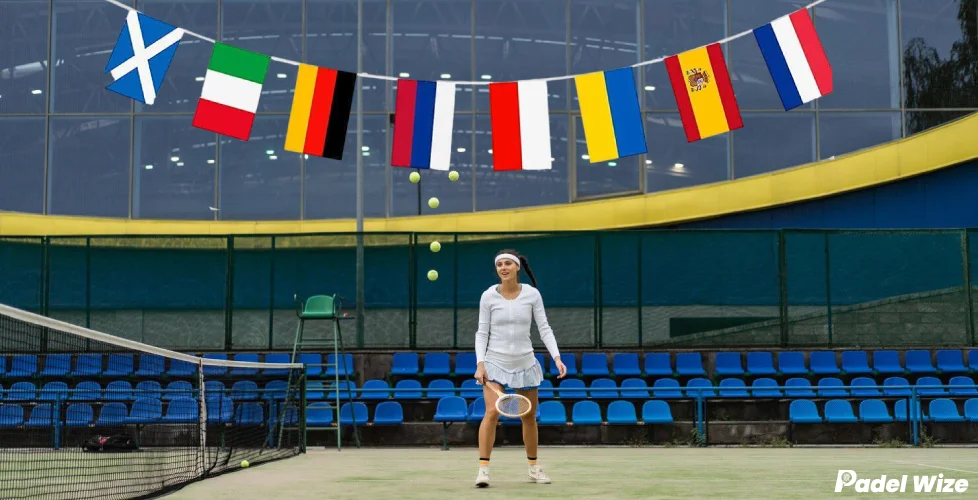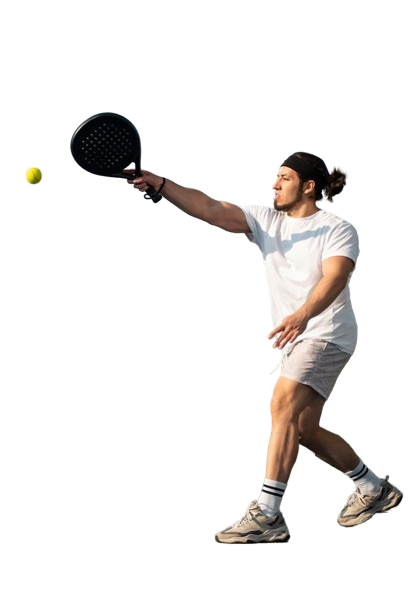Over the past decade, the world of sports has seen a remarkable surge in the popularity of padel, a racket sport that combines elements of tennis and squash. From Spain to the Middle East, and increasingly in the Americas and Asia, padel has become more than just a recreational activity—it’s a global phenomenon. In this blog, we’ll delve into the rise of fastest growing sport in the world padel, exploring its history, appeal, and the reasons behind its growing popularity.
What Is Padel?
Padel is a doubles racket sport played on an enclosed court, smaller than a tennis court, with walls that allow the padel ball to bounce off them, similar to squash. The game uses a solid, perforated paddle and a tennis-like ball, with players scoring points using the same system as tennis.
What makes padel unique is its accessibility. The sport is easy to learn for beginners but offers enough complexity to keep experienced players engaged. The smaller court size and emphasis on strategy over power make it an ideal sport for all ages and fitness levels.
Related: What is Padel Sport? Key Facts and Tips for New Players
Where Did Padel Start?
Padel originated in Mexico in 1969, when Enrique Corcuera improvised a game by modifying his squash court at home. The sport quickly gained traction in Spain and Argentina, thanks to its social and accessible nature. By the 1990s, padel was firmly established in these regions and began spreading to other parts of Europe and Latin America.
Today, the sport boasts an estimated 25 million players worldwide, with the majority concentrated in Spain, where padel is the second-most popular sport after soccer. The establishment of the World Padel Tour in 2013 further fueled its professional appeal, attracting elite players and elevating the sport’s global profile.
Why is Padel So Popular and Which Celebrities Play?
The meteoric rise fastest growing sport in the world padel can be attributed to several factors:
1. Accessibility for All Skill Levels
Padel’s inclusive nature is one of its strongest appeals. Unlike sports that require years of training to enjoy, padel offers an easy entry point. The smaller court size reduces the emphasis on strength and speed, making it more about placement, tactics, and teamwork. Players of all ages and abilities can pick up a racket and have fun within minutes.
For beginners, the forgiving nature of the game—where balls can bounce off walls and stay in play—reduces frustration. For advanced players, the strategic depth and precision required to master the game provide endless challenges.
Related: Basic Padel Rules Every Beginner Should Know
2. A Social Sport
Padel is inherently social. As a doubles-only sport, it requires four players, making it an excellent way to connect with friends or meet new people. The close proximity of players on the court fosters communication, camaraderie, and laughter, adding a layer of enjoyment beyond competition.
In an age where technology often isolates us, padel serves as a refreshing counterbalance, encouraging face-to-face interaction and teamwork.
Related: Why should you play Paddle Game: Health, Fun, and Social Benefits
3. Fitness Without Overexertion
Padel provides an effective workout without the extreme physical demands of sports like tennis or squash. Players engage in short sprints, quick reflexive movements, and consistent arm swings, offering a full-body workout that improves cardiovascular health, agility, and coordination.
The sport’s moderate intensity also reduces the risk of injury, making it an appealing option for older adults or those looking for low-impact exercise.
Related: Fitness and Health Benefits of Playing at a Padel Club
4. Minimal Equipment and Space Requirements
Compared to other racket sports, padel has relatively low barriers to entry. All that’s needed is a padel racket, a ball, and access to a court. Many countries now boast an increasing number of public and private padel facilities, making the sport more accessible.
The compact court size means padel can be played in urban areas where space is often a premium. This has led to a surge in padel clubs in cities, catering to urbanites seeking a convenient and enjoyable activity.
5. Growing Professional Scene
The professional padel circuit, led by the World Padel Tour, has injected excitement and visibility into the sport. High-profile tournaments, thrilling matches, and charismatic players have attracted fans worldwide. The accessibility of live-streamed matches and highlight reels on social media has further expanded padel’s reach, drawing in younger audiences.
Countries outside traditional padel strongholds, such as the UAE, Sweden, and the UK, have also begun hosting major tournaments, helping to cement the sport’s global footprint.
6. Celebrity Endorsements and Media Exposure
In recent years, padel has gained a significant boost from celebrity endorsements. Soccer stars like Lionel Messi and Zlatan Ibrahimović, as well as tennis legends like Rafael Nadal, have spoken about their love for padel. These endorsements have not only brought the sport into the limelight but have also encouraged fans to try it themselves.
Additionally, social media has played a crucial role in spreading awareness. Viral videos showcasing padel’s fast-paced rallies and exciting moments have sparked curiosity and drawn in new players.
7. Pandemic-Era Popularity
The COVID-19 pandemic also contributed to padel’s growth. As a sport that can be played outdoors with minimal physical contact, padel emerged as a safe recreational activity during lockdowns. This led to a surge in court construction and participation, as people sought new ways to stay active and connected.
Related: Top 10 Health Benefits of Playing the Padel Game
Padel Popularity by Country
Padel’s journey from a niche sport to a global phenomenon has been nothing short of extraordinary. Spain remains the epicenter of the sport, with over 20,000 courts and millions of active players. Argentina, too, has a thriving padel culture, producing many of the sport’s top athletes.

The fastest-growing sport in the world, padel, varies by country, with some nations emerging as major hubs for the sport:
Asia
Padel has rapidly gained popularity in Asia, especially in Japan, India, and China, driven by urbanization and its compact court size, ideal for space-constrained cities.
In Japan, cities like Tokyo and Osaka have embraced padel due to its innovative, social nature, attracting urban professionals and youth.
India’s growing middle class and fitness culture have spurred interest, with cities like Mumbai, Bangalore, and Delhi developing new facilities for players of all ages.
China’s metropolitan hubs, such as Shanghai and Beijing, have integrated padel courts into sports complexes, supported by government initiatives and private investments in sports infrastructure.
North America
Padel is an emerging sport in North America, gaining traction in the U.S. and Canada.
In the U.S., states like Florida, Texas, and California lead the way, with warm climates and tennis communities fostering padel’s growth through new clubs and private investments.
Canada is also catching up, with cities like Toronto, Vancouver, and Montreal introducing dedicated padel courts. The sport’s accessibility and social appeal align with Canada’s community-focused culture.
Cross-border influences from Latin America and Europe, along with international tournaments, are fueling interest and building a growing community of players across both countries.
Spain
Spain is the global leader in padel, boasting the highest number of players and courts. The sport is second only to football in terms of participation, and it’s common to find padel courts in nearly every sports club. Spanish players dominate international padel tournaments, further solidifying the country’s position as a powerhouse.
Argentina
Argentina is another stronghold for padel. The sport’s rise in Argentina was fueled by its introduction in the 1980s, and it quickly became a cultural phenomenon. Today, Argentina is home to some of the best professional players and hosts numerous international competitions.
Italy and Sweden
Italy and Sweden have experienced a significant padel boom in recent years. The number of courts in these countries has surged, and local leagues are thriving. The sport’s growth has been aided by investments in infrastructure and promotional efforts by clubs and associations.
Middle East
In the Middle East, padel has gained traction among the affluent and expatriate communities. Countries like the UAE and Saudi Arabia have seen a sharp rise in padel facilities, with luxury clubs and tournaments attracting players and spectators alike.
Related: Expert Tips for Successful Padel Tennis Court Installation
What Lies Ahead for Padel?
The future of padel looks bright. As the sport continues to grow, innovations in court construction, equipment design, and technology will likely enhance the player experience. Moreover, efforts to include padel in multi-sport events, like the Olympics, could propel its popularity to new heights.
Governments and private investors are also recognizing the sport’s economic potential. From tourism tied to international tournaments to the construction of state-of-the-art padel clubs, the sport is becoming a lucrative industry in its own right.
The Fastest Growing Sport in the World
Padel’s growth trajectory has been nothing short of remarkable. According to recent reports, the sport now has over 20 million active players in more than 90 countries. Its popularity is particularly notable in Europe, the Middle East, and Latin America. Padel courts are springing up in urban centers and sports clubs, catering to the growing demand.
One reason for this explosive growth is the sport’s inclusivity. Padel is appealing to men and women, young and old, and people of varying athletic abilities. It’s also a relatively low-cost sport compared to others, making it accessible to a wide audience. These factors, combined with its fast-paced and entertaining gameplay, have made padel the go-to choice for many looking for a new recreational activity.
The Future of Padel
The future of Padel looks incredibly bright, and it is the fastest-growing sport in the world. As more countries adopt the sport and invest in infrastructure, the number of players is expected to grow exponentially. Technology also enhances the padel experience, with smart courts and digital platforms making it easier to book games and track performance.
The inclusion of padel in major sports events could further accelerate its growth. Talks of padel being added to the Olympics are already underway, which would undoubtedly bring global recognition and attract even more players to the sport.
Related: The Ultimate Guide to Indoor Padel Courts Design, Benefits, Trends, and Implementation
Conclusion
Paddle is the fastest-growing sport in the world, a testament to its universal appeal. It’s a sport that blends the competitive spirit of tennis, the strategy of squash, and the social element of a backyard game. Whether you’re a seasoned athlete or a casual player, paddle offers something for everyone.
As courts continue to spring up worldwide and more people discover its joys, padel is set to become a staple in the global sports community. So, grab a racket, find a court, and join the millions experiencing the thrill of this fast-growing sport!







